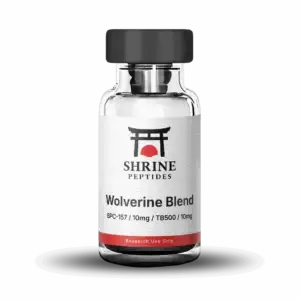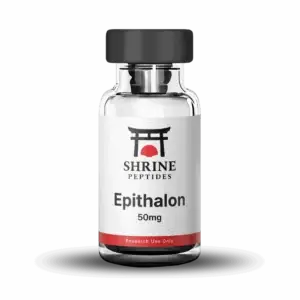NAD+ Biofermented (1000mg)
$342.00
NAD+ Biofermented (1000mg) – Research grade peptide for laboratory investigations and preclinical studies | Research Use Only – Not for Human Consumption
NAD+ Biofermented (1000mg) Research Compound
Research Use Only – Not for Human or Animal Consumption
NAD+ Biofermented (1000mg) is a synthetic research peptide that has been investigated in laboratory settings for its potential interactions with various biological pathways. This research compound has been studied in preclinical models to evaluate its pharmacological properties and potential mechanisms of action.1 Preliminary investigations have examined this peptide’s effects on cellular signaling pathways, receptor interactions, and physiological responses in controlled laboratory environments.
Research Overview
Laboratory studies have explored the potential biological activities of NAD+ Biofermented (1000mg) through various experimental methodologies. Research has focused on characterizing the peptide’s structure-activity relationships, binding affinities to target receptors, and downstream signaling cascade activation.2 Preclinical investigations have utilized multiple research models to assess the compound’s pharmacokinetic properties, including absorption, distribution, metabolism, and elimination characteristics. These fundamental research efforts contribute to the broader understanding of peptide-based signaling mechanisms and their potential applications in biological research.
Preclinical Investigations
Research teams have conducted systematic investigations to evaluate NAD+ Biofermented (1000mg)’s biological activities in controlled experimental settings. Studies have employed various in vitro and in vivo methodologies to assess the peptide’s effects on cellular processes, tissue function, and systemic responses in research models.3 Data from these investigations have contributed to understanding the peptide’s potential mechanisms of action, optimal dosing parameters for research applications, and potential interactions with biological systems.
Product Specifications
- Contents: NAD+ Biofermented (1000mg)
- Form: Lyophilized powder
- Purity: >98% (verified by HPLC)
- Storage: Store at -20°C in a dry environment
- Reconstitution: Use bacteriostatic water for laboratory applications
- Stability: Stable when stored properly under recommended conditions
Quality Assurance and Documentation
- Third-party laboratory tested for purity and identity verification
- Certificate of Analysis (COA) available upon request for each batch
- HPLC chromatography results provided
- Mass spectrometry data available
- Manufactured under strict quality control protocols
- Batch-specific documentation and traceability
- Compliance with research-grade standards
Research Applications
- Peptide receptor interaction studies
- Cellular signaling pathway research
- Pharmacokinetic and pharmacodynamic investigations
- Structure-activity relationship studies
- Preclinical model research
- Biochemical pathway mapping
- Molecular mechanism elucidation
- In vitro biological activity screening
- Peptide stability and formulation research
- Comparative peptide pharmacology studies
Important Research Notice
FOR LABORATORY AND RESEARCH USE ONLY. This product is intended exclusively for scientific research, in vitro studies, and laboratory investigations. This compound is not intended for human or animal consumption, clinical applications, or any diagnostic or therapeutic uses.
Researchers should consult relevant scientific literature and follow appropriate safety protocols when handling this research compound. Proper laboratory equipment, personal protective equipment, and training are required for working with this material.
Regulatory Compliance Statement
This product is sold as a research chemical for laboratory use only. Shrine Peptides operates as a chemical supplier. Shrine Peptides is not a compounding pharmacy or chemical compounding facility as defined under 503A of the Federal Food, Drug, and Cosmetic Act. Shrine Peptides is not an outsourcing facility as defined under 503B of the Federal Food, Drug, and Cosmetic Act.
The statements made within this product description have not been evaluated by the US Food and Drug Administration. The products we offer are not intended to diagnose, treat, cure or prevent any disease. Human/Animal Consumption Prohibited. Laboratory/In-Vitro Experimental Use Only.
Please review and adhere to our Terms and Conditions before ordering.
References:
- Schultz, Michael B, and David A Sinclair. “Why NAD(+) Declines during Aging: It’s Destroyed.” Cell metabolism vol. 23,6 (2016): 965-966. https://www.ncbi.nlm.nih.gov/pmc/articles/PMC5088772/
- Braidy N, Liu Y. NAD+ therapy in age-related degenerative disorders: A benefit/risk analysis. Exp Gerontol. 2020 Apr;132:110831. doi: 10.1016/j.exger.2020.110831. https://pubmed.ncbi.nlm.nih.gov/31917996/
- Johnson, Sean, and Shin-Ichiro Imai. “NAD + biosynthesis, aging, and disease.” F1000Research vol. 7 132. 1 Feb 2018. https://www.ncbi.nlm.nih.gov/pmc/articles/PMC5795269/
- Bieganowski P, Brenner C. Discoveries of nicotinamide riboside as a nutrient and conserved NRK genes establish a Preiss-Handler independent route to NAD+ in fungi and humans. Cell. 2004 May 14;117(4):495-502. https://pubmed.ncbi.nlm.nih.gov/15137942/
- Fang, E. F., Lautrup, S., Hou, Y., Demarest, T. G., Croteau, D. L., Mattson, M. P., & Bohr, V. A. (2017). NAD+ in Aging: Molecular Mechanisms and Translational Implications. Trends in molecular medicine, 23(10), 899–916. https://www.ncbi.nlm.nih.gov/pmc/articles/PMC7494058/
- Harden, A; Young, WJ (24 October 1906). “The alcoholic ferment of yeast-juice Part II.–The coferment of yeast-juice”. Proceedings of the Royal Society of London. Series B, Containing Papers of a Biological Character. 78 (526): 369–375. https://royalsocietypublishing.org/doi/10.1098/rspb.1906.0070
- Mills KF, Yoshida S, Stein LR, Grozio A, Kubota S, Sasaki Y, Redpath P, Migaud ME, Apte RS, Uchida K, Yoshino J, Imai SI. Long-Term Administration of Nicotinamide Mononucleotide Mitigates Age-Associated Physiological Decline in Mice. Cell Metab. 2016 Dec 13;24(6):795-806. https://pubmed.ncbi.nlm.nih.gov/28068222/
- Long AN, Owens K, Schlappal AE, Kristian T, Fishman PS, Schuh RA. Effect of nicotinamide mononucleotide on brain mitochondrial respiratory deficits in an Alzheimer’s disease-relevant murine model. BMC Neurol. 2015 Mar 1;15:19. https://pubmed.ncbi.nlm.nih.gov/25884176/
- Safety & Efficacy of Nicotinamide Riboside Supplementation for Improving Physiological Function in Middle-Aged and Older Adults. https://clinicaltrials.gov/ct2/show/NCT02921659
- Braidy N, Liu Y. NAD+ therapy in age-related degenerative disorders: A benefit/risk analysis. Exp Gerontol. 2020 Apr;132:110831. https://pubmed.ncbi.nlm.nih.gov/31917996/
- Wang S, Xing Z, Vosler PS, Yin H, Li W, Zhang F, Signore AP, Stetler RA, Gao Y, Chen J. Cellular NAD replenishment confers marked neuroprotection against ischemic cell death: role of enhanced DNA repair. Stroke. 2008 Sep;39(9):2587-95. https://pubmed.ncbi.nlm.nih.gov/18617666/
- Rajman, Luis et al. “Therapeutic Potential of NAD-Boosting Molecules: The In Vivo Evidence.” Cell metabolism vol. 27,3 (2018): 529-547. https://www.ncbi.nlm.nih.gov/pmc/articles/PMC6342515/
- Heer C, et al, Coronavirus infection and PARP expression dysregulate the NAD metabolome: An actionable component of innate immunity. Journal of Biological Chemistry. Volume 295, Issue 52, Dec 2020. https://www.jbc.org/article/S0021-9258(17)50676-6/fulltext
- Mehmel, Mario et al. “Nicotinamide Riboside-The Current State of Research and Therapeutic Uses.” Nutrients vol. 12,6 1616. 31 May. 2020, doi:10.3390/nu12061616 https://www.ncbi.nlm.nih.gov/pmc/articles/PMC7352172/
- Leung A, Todorova T, Ando Y, Chang P. Poly(ADP-ribose) regulates post-transcriptional gene regulation in the cytoplasm. RNA Biol. 2012 May;9(5):542-8. doi: 10.4161/rna.19899. Epub 2012 May 1. PMID: 22531498; PMCID: PMC3495734.
- Croteau DL, Fang EF, Nilsen H, Bohr VA. NAD+ in DNA repair and mitochondrial maintenance. Cell Cycle. 2017 Mar 19;16(6):491-492. doi: 10.1080/15384101.2017.1285631. Epub 2017 Feb 1. PMID: 28145802; PMCID: PMC5384578.











Reviews
There are no reviews yet.